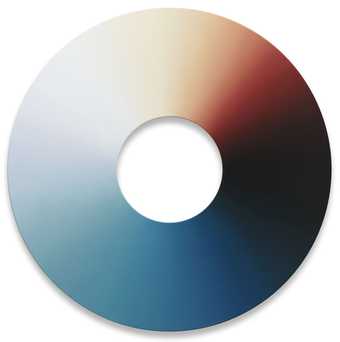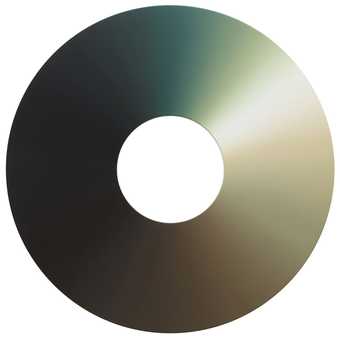My father was a landscape painter in Iceland, so I grew up surrounded by a lot of general art history books. I would endlessly study the images in them, and it was here that I first encountered a JMW Turner painting. I remember being puzzled as to why an abstract work was located before the other, less abstract, less dynamic paintings in the book.
My second and most formative encounter with Turner’s work was at art school, when I was studying British landscape painters from 1750 to 1900. I found their approach mesmerising, particularly their way of using light to create ephemeral atmospheric effects. I was gripped by how Constable painted cloud formations with great conviction and how Gainsborough created a sense of freedom in his compositions. But it was Turner who appeared to have a distinct emotional ability to shape and frame light.
I have focused on the ephemeral since my earliest work. Turner’s paintings offer great potential for exploring the notions of transformation, movement and atmosphere; for reflecting on one’s sense of self as being not necessarily solid and stable, but evolving through our many exchanges with other people, with the world. I recently read an interview with biologist and thinker Francisco Varela, who talked about our feeling of self as being our interface with the world. I am ‘me’ when interacting, when caught up in relations and contexts, but the ‘me’ is an aggregate of ephemera in a way. We can’t localise it. This is a fascinating thought.
For Turner, colour was never an autonomous phenomenon or an aesthetic end in itself; he used it to establish ephemeral effects, which allowed him to leave traditional depiction behind. This was highly radical. He was convinced that his paintings were of great relevance to the world, and I have for many years been inspired by the sense of confidence communicated through his work and the idea that the ephemeral could carry meaning into society.

Olafur Eliasson
Colour experiment no. 61 2014
© 2013 Olafur Eliasson
I find it interesting that Turner seemed to seek whatever truth there is in visual representation in careful observation of external phenomena and the way we perceive light and colour. There have been very few studies extracting this sense of the ephemeral from the objects of desire that his paintings have become, due to their great popularity. I was therefore eager to detach light and colour from their iconic status in his works in order to support what I see as his obsession with these atmospheric effects.
Turner’s palette, which he formulated according to the hues of the natural world, is very recognisable. It seemed like a natural step to begin an experimental study by abstracting this palette and filtering it into a new, utopian colour scheme. This type of abstract matter can, at the same time, feel familiar. I think abstraction may be welcoming. It offers the potential to re-evaluate our sense of self, of our being present.
Starting in 2009, I began analysing pigments, paint production and application of colour to produce light, and then I worked with a chemist to mix paint in the exact colour for each nanometre of light in the visible spectrum. The Colour experiments grew out of these early explorations. In the first stages, I pooled about 30 of Turner’s works and then gradually singled out those that had the most varied palettes.

Olafur Eliasson
Colour experiment no. 60 2014
© 2013 Olafur Eliasson
For each of his paintings, I bring the colours and light into a schematic system which is then transferred to a round canvas without a centre. This shape generates a feeling of endlessness and allows the viewer to take in the artwork in a decentralised, meandering way. The fading colours in each sequence deter the viewer’s eye from resting on a single line or spot. Instead, the eye must negotiate its way around the work, which creates a sense of personal narrative.
Each work in the series of seven oil paintings is unique; however, all are attempts at developing what I hope will evolve into a dynamic, new colour theory.
